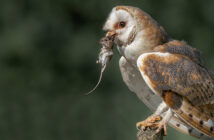Interested parties Stakeholders met on 23 April near the HSE offices located in Bootle to discuss possible ways forward for the use of Second-Generation Anticoagulant Rodenticides (SGARs.) Although much still needs to be resolved, overall delegates felt optimistic.
This meeting was the promised follow-up discussion organised by the Health & Safety Executive (HSE) after the publication of stakeholder’s responses on 15 March. This publication recorded the comments made on proposals for environmental risk mitigation measures to be imposed in the UK on rodenticide bait products based on difethialone, difenacoum, bromadiolone, brodifacoum and flocoumafen – known collectively as SGARs (Second-Generation Anticoagulant Rodenticides.) Click here to view.
The aim of the meeting was to create a forum where key groups such as gamekeepers, manufacturers, pest controllers and wildlife groups could work with HSE in finding a practical way forward in the use of SGARs that strikes a balance between environmental, public health and commercial concerns.
|
In brief, the key points to emerge were:
The meeting, attended by approximately 30 individuals, began with short presentations from interested stakeholders who were asked to present their opinions and concerns. These consisted of Richard Moseley representing BPCA) and Iain Turner representing NPTA, Roger Sharples (CEFIC), Sue Gore (West Berkshire Council), Jonathan Peck (NPAP), Charles Nodder (National Gamekeepers Association), David Ramsden (Barn Owl Trust), Alan Buckle (CRRU) and Jeff Knott (RSPB). In addition, there was then a longer presentation by Richard Shore on the Predatory Bird Monitoring Scheme. After lunch the delegates were divided into groups to discuss the desirability and mechanisms of stewardship schemes. A review of the output from these discussion groups, prepared by HSE, if available here. HSE agreed a review and summary of the meeting, including agreed actions and next steps, will be sent to all stakeholders that participated in the event and also to those involved in the original stakeholder engagement exercise in 2012. Without doubt, this will be just one small further step concerning the use of these products. |


